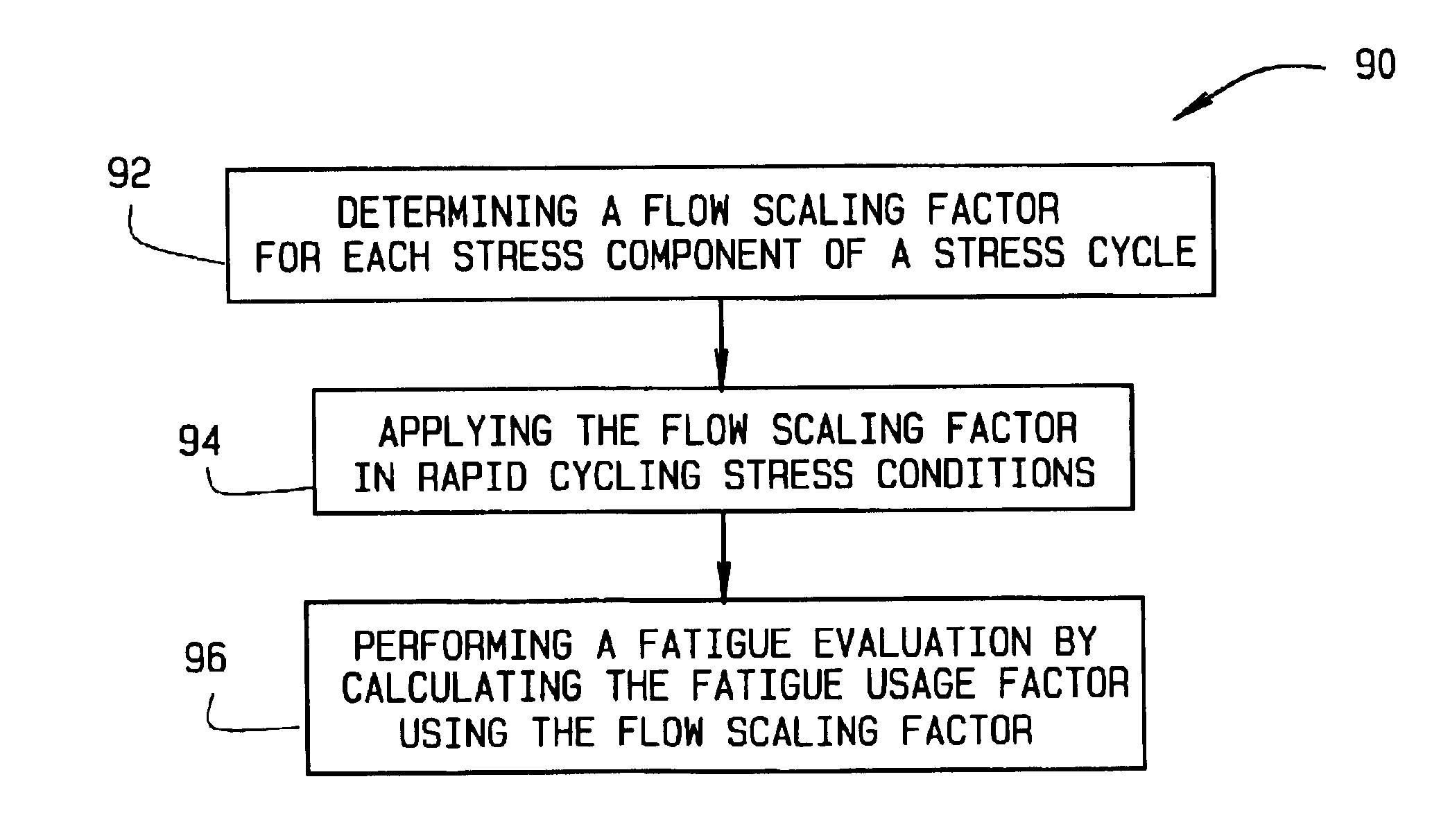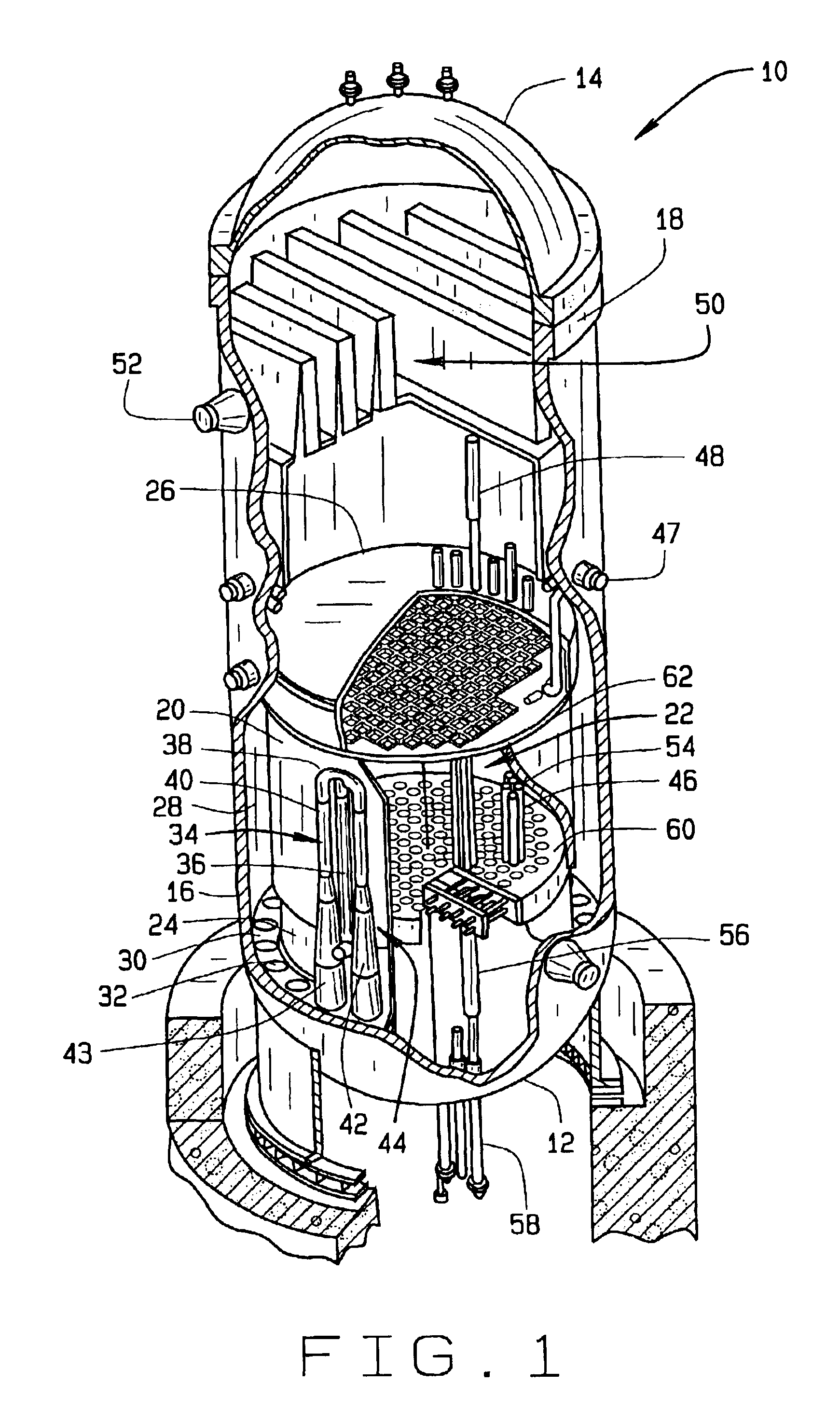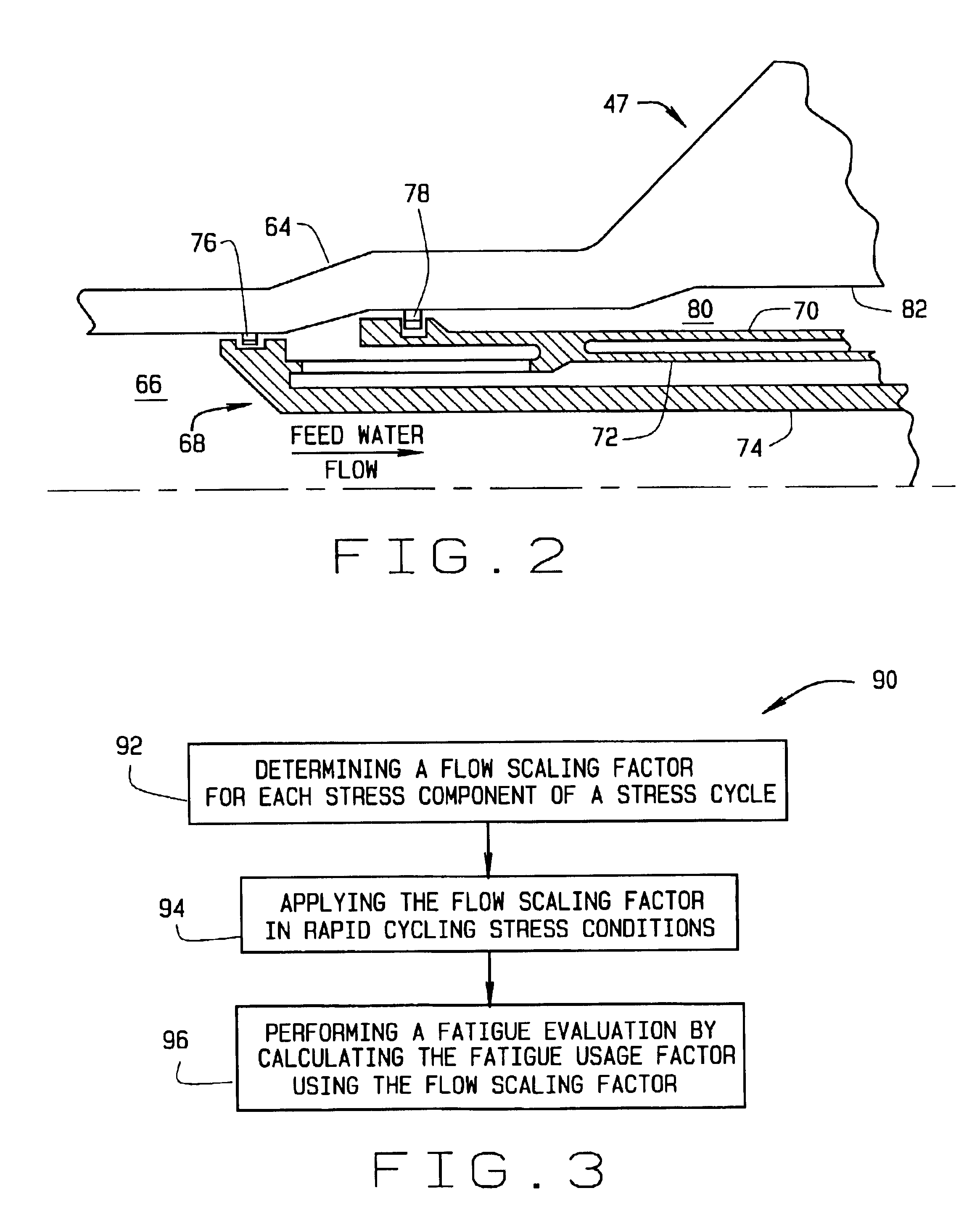Methods and systems for determining fatigue usage factors for reactor components
- Summary
- Abstract
- Description
- Claims
- Application Information
AI Technical Summary
Problems solved by technology
Method used
Image
Examples
Embodiment Construction
[0016]A method for determining a usage factor of a component in a reactor is described below in detail. Because of safety concerns, reactors have been licensed to operate at a maximum power that is less than what the reactor is capable of producing. From years of reactor operation it has been determined that the safety margins that have limited maximum reactor power output are larger than what are needed for safe reactor operation. As a result, reactors are being reconfigured to operate at higher maximum power. This extended power uprate (EPU) of reactors requires a new license from the governing nuclear regulatory agency. To obtain a license to operate a reactor at higher maximum power, a revised safety analysis report is required where the systems and components of the reactor are analyzed to determine if safe operation is obtainable at the extended power uprate. One of the components that is analyzed is the feedwater nozzles of the reactor. Particularly, an analysis is made of th...
PUM
 Login to View More
Login to View More Abstract
Description
Claims
Application Information
 Login to View More
Login to View More - R&D
- Intellectual Property
- Life Sciences
- Materials
- Tech Scout
- Unparalleled Data Quality
- Higher Quality Content
- 60% Fewer Hallucinations
Browse by: Latest US Patents, China's latest patents, Technical Efficacy Thesaurus, Application Domain, Technology Topic, Popular Technical Reports.
© 2025 PatSnap. All rights reserved.Legal|Privacy policy|Modern Slavery Act Transparency Statement|Sitemap|About US| Contact US: help@patsnap.com



